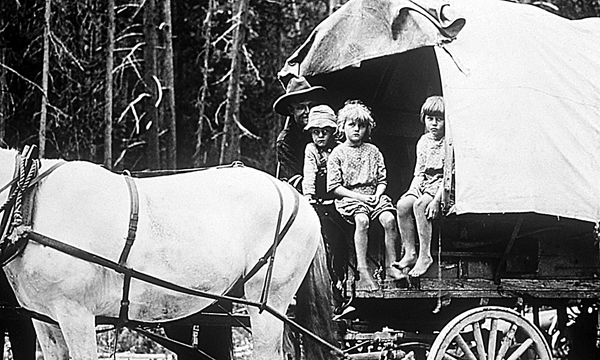
Melondy Phillips
Staff Writer
An average size family on the frontier consisted of seven to 10 children. Having children meant more hands to help and more men for the militia. A small homestead of 200 to 800 acres generally needed about nine adults to keep crops growing and harvested on time.
Due to many factors, such as illness, infection, attacks, etc., only half of the children born on the frontier survived to maturity.
Compassion for children was well-practiced on the frontier. There was one story about a man walking down the road and when passing a woman with a baby asked if he could hold the child for just a moment. Although the mother was hesitant she eventually handed the baby to the man. The gentleman held the baby close to his chest for a few minutes before handing it back. With tears running down his face he placed a few gold nuggets in the baby’s blanket to help care of it.
Parents loved their children very much and knew how to raise them in the art of “being loved, not pampered,” and “tenderness but not softness.” Children learned that work and responsibilities were just a part of life, as were looking out for each other and helping those in need without expecting anything in return.
It was not uncommon for unsupervised eight year olds, with guns, to be carrying large pails to get water from the creek or fending off wild animals to protect the livestock.
Children started working as soon as they were able. They were assigned chores matching their ability and size. Most of the chores were not seen as boy or girl specific things with the exceptions that boys usually learned barrel making and horse shoeing, while girls cared for younger siblings, and worked at sewing and spinning wool.
Even toddlers could help out by rocking a baby to sleep.
By the age of four or five, young girls began to learn how to shear sheep, prep wool for spinning and how to sew and knit. They made clothing and bed sheets to keep the family warm in the winter.
Boys learned to make shingles and helped split wood. A young boy also became a henchman for his dad when he went out hunting. If a pond was nearby while they were out, the young fellow might catch fish to help feed the family.
If fences and buildings needed to be built or mended, all the children took part in the work.
Until the children learned how to feed the animals, they learned how to make and store hay, and gather fresh fruits and vegetables for both family and animals.
Children from five to seven years old would clean, milk the cows and make butter, make candles, draw water from the creek, gather stones for building, tend the fire, help with harvest, and keep the farm animals out of the crops.
By age seven, most children were capable of hitching up and driving a buggy.
Boys as young as nine could get apprenticeships; this helped ensure a good job or trade by the time they were old enough to marry.
Older girls honed their skills of cooking, spinning wool, sewing, knitting, preserving food and making soap.
All these skills were essential to life.
As hard as all this sounds, kids were kids and knew how to turn many of their chores into games.
Who could shear the sheep the fastest with the most accuracy?
Who could catch the most fish, collect the most wood, or carry the eggs fastest without breaking any? Who could finish carding the wool first or collect the most berries?
Toys were handmade from items on the farm. A piece of string and some left over wood could be turned into a spinning top. A stick became an imaginary horse. Girls stitched scraps of fabric together and stuffed it with cornhusks, making a doll for themselves. A whirligig was easily constructed from a piece of string and a button or slice of wood with two holes. Rolling the Hoop and the Game of Graces only required a couple of sticks and wooden hoops.
Since most families had many children there was always someone to play with. Two or more people could play battledores; a game similar to badminton.
They went swimming in warm weather and had snowball fights and went sledding in the winter.
Board games were also popular, such as Nine Man’s Morrice, which dates back thousands of years. Children sang, danced, told stories, practiced tongue twisters, and had fun with rhymes.
Because children had a strong sense of responsibility and a certain level of skills and trustworthiness, many times they were left unsupervised to play out in the field or in the house; a feeling of independence while maintaining a strong bond to the family and its wellbeing as a whole.
Life on the frontier was hard and marriage happened early in life – to help safeguard the survival of the family and to carry the family’s legacy to the next generation.



